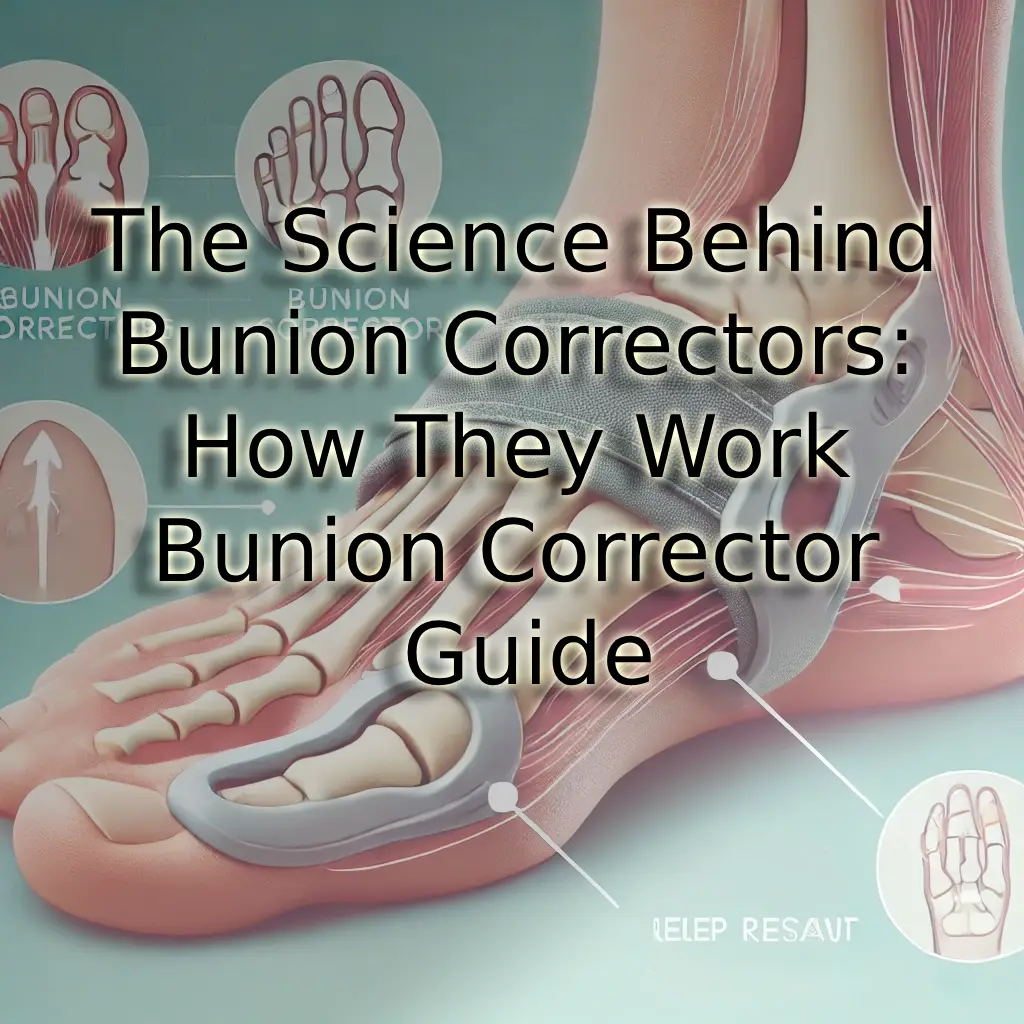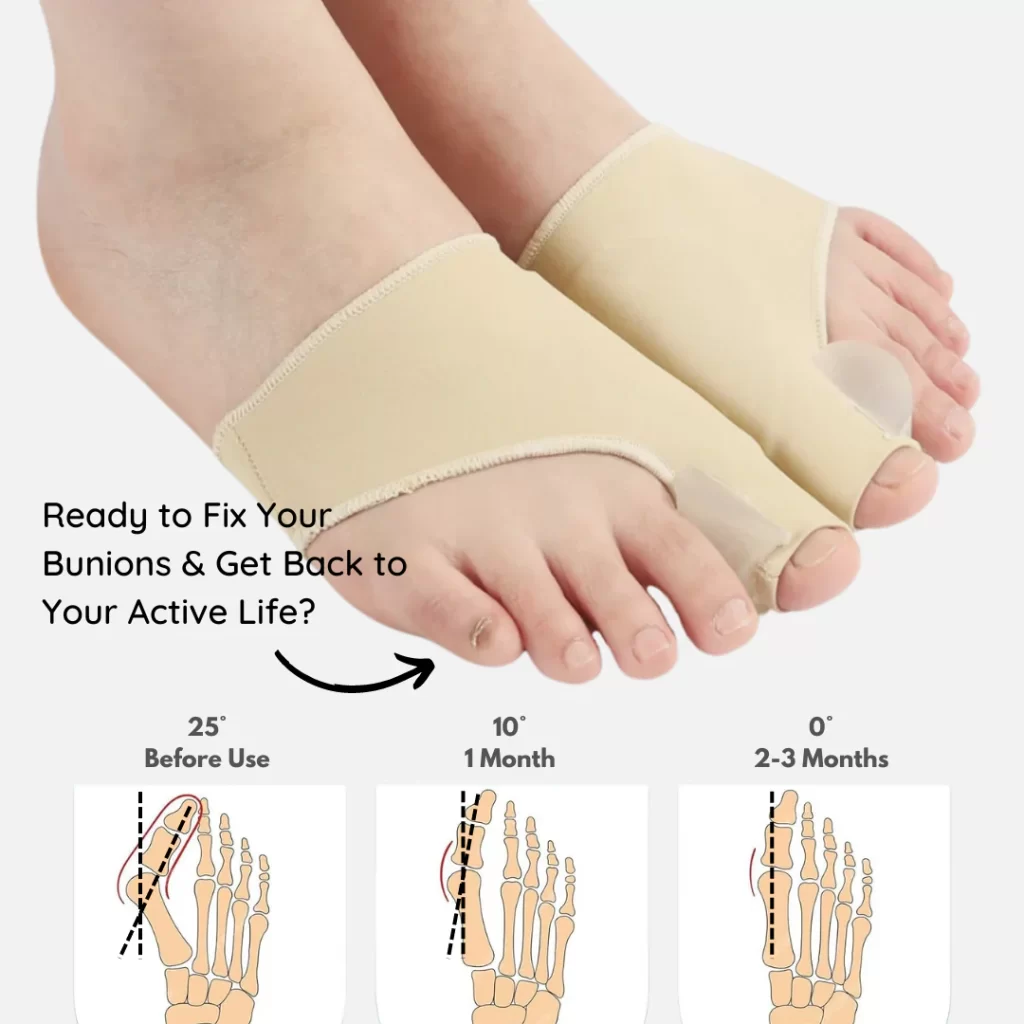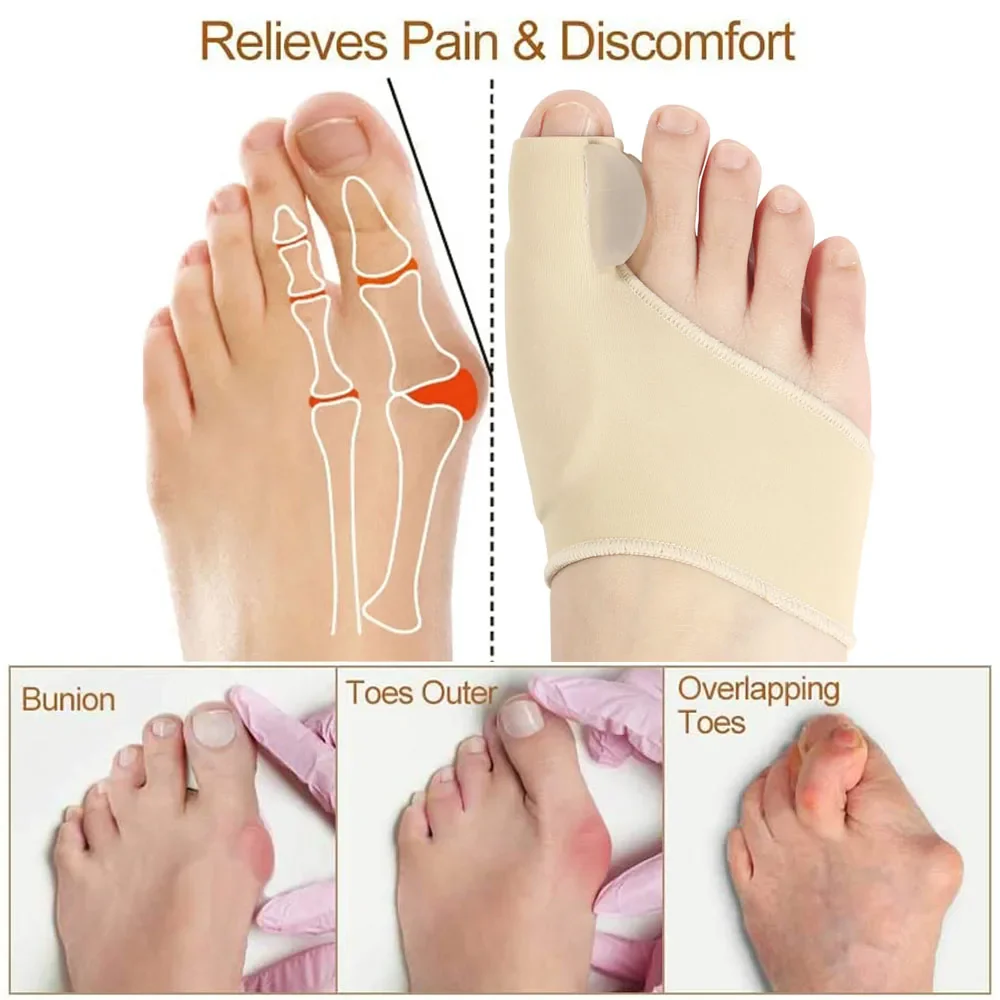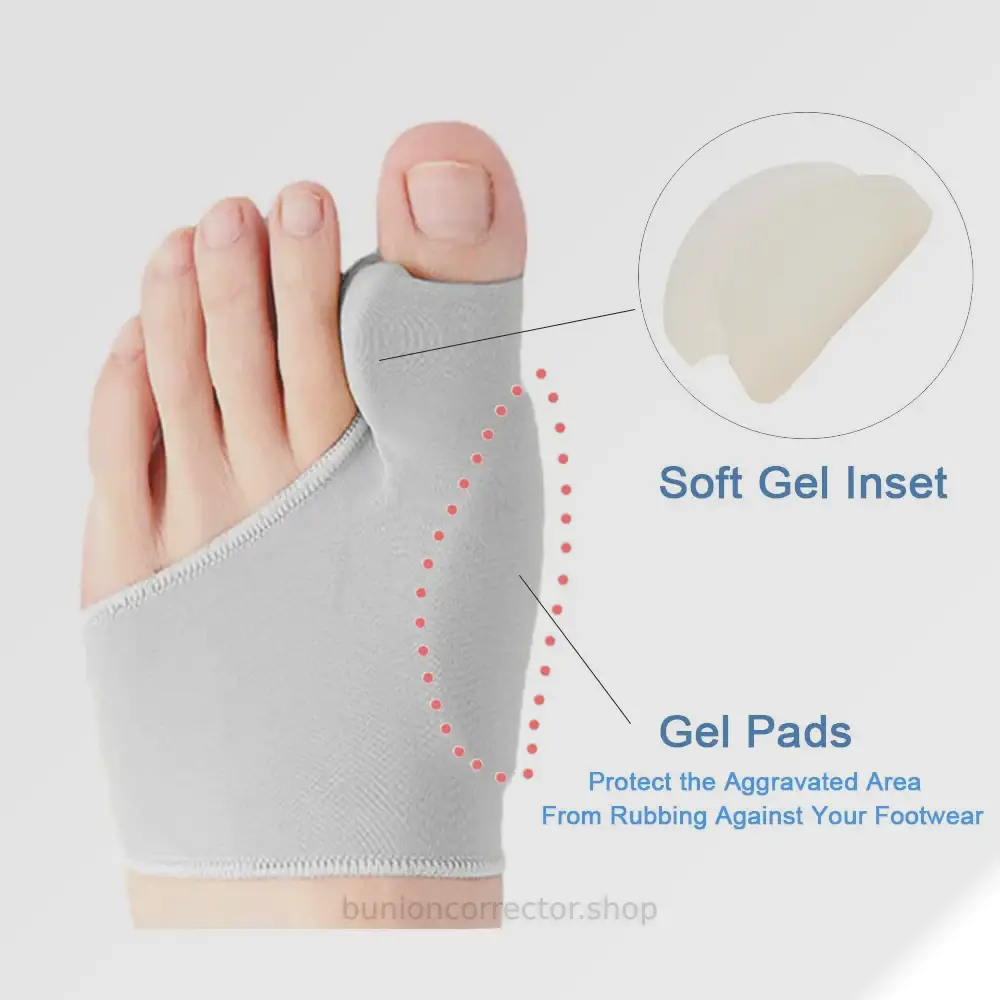Bunions can be a painful and frustrating condition that affects many people worldwide. If you’re suffering from a bunion, you may have considered using a bunion corrector. But how exactly do these devices work? In this blog post, we’ll break down the science behind bunion correctors, explain how they function, and explore why they can be effective for some people. Let’s dive into the mechanics and benefits of bunion correctors and give you a better understanding of how they can help relieve discomfort and pain caused by bunions.

What is a Bunion?
Before diving into how bunion correctors work, it’s essential to understand what a bunion is. A bunion, or hallux valgus, is a bony bump that forms on the joint at the base of your big toe. It occurs when the big toe pushes against the adjacent toe, causing the joint of the big toe to enlarge and stick out. Over time, this condition worsens and can cause swelling, pain, and stiffness in the affected area.
Bunions can develop for several reasons, including:
- Genetics: If bunions run in your family, you’re more likely to develop one.
- Footwear: Tight, narrow, or high-heeled shoes can put pressure on your toes, encouraging bunion formation.
- Arthritis: Inflammation of the joints can lead to bunion development.
As bunions progress, they can lead to chronic pain, difficulty walking, and a noticeable deformity in the foot. This is where bunion correctors come in as a non-invasive treatment option.
How Do Bunion Correctors Work?
Bunion correctors are designed to provide relief and help realign the foot to its natural position. They do this by applying gentle pressure to the big toe, guiding it back into alignment over time. Here’s how they work in detail:

1. Realignment of the Big Toe
The primary function of a bunion corrector is to realign the big toe. Most bunion correctors have a splint or brace that wraps around the foot and holds the toe in a straight position. By doing this, the corrector helps reverse the deformity caused by the bunion.
This process of realignment helps reduce the friction and pressure between the big toe and the other toes, which can reduce pain and swelling over time. With consistent use, the toe may gradually shift closer to its natural position.
2. Improved Joint Mobility
Bunions often lead to stiffness in the toe joints, making it difficult to move or bend the toes. Bunion correctors help improve joint mobility by gently stretching and repositioning the soft tissues around the big toe. This increased mobility can help reduce stiffness and discomfort, making everyday activities like walking easier.
Some bunion correctors also come with toe separators, which keep the toes from rubbing against each other. This added separation can help prevent further damage to the toes and alleviate pain associated with friction.
3. Pressure Relief
One of the main benefits of using a bunion corrector is that it reduces pressure on the bunion itself. Many people experience pain because their shoes press against the bunion, causing irritation and inflammation. A bunion corrector acts as a barrier between the bunion and the shoe, protecting the sensitive area and preventing further aggravation.
By redistributing the weight and pressure across the foot, bunion correctors help reduce pain and inflammation caused by prolonged standing or walking.
4. Support for the Foot Arch
In addition to realigning the toes, some bunion correctors provide arch support. Poor foot mechanics, such as flat feet or fallen arches, can contribute to the development of bunions. Bunion correctors with built-in arch support help to stabilize the foot, ensuring that your weight is evenly distributed and reducing strain on the joints.
By supporting the natural shape of the foot, these correctors can help prevent further deformities and promote better foot health.
Types of Bunion Correctors
Bunion correctors come in several different forms, each offering its own benefits depending on your needs and lifestyle. Here are some of the most common types:
1. Night Splints
Night splints are designed to be worn while you sleep. They typically consist of a rigid brace that holds your toe in place, gently pulling it back into alignment over time. Since they are only worn at night, they won’t interfere with your daily activities. However, some people find night splints uncomfortable to wear during sleep.
2. Gel Bunion Pads
Gel bunion pads are soft, cushion-like pads that fit over the bunion to reduce pressure and friction from shoes. These are ideal for those who want to alleviate pain while wearing shoes throughout the day. However, they don’t provide as much realignment as splints or braces.
3. Toe Separators
Toe separators are small devices that sit between your toes to prevent them from rubbing against each other. These are often used in combination with other bunion correctors and can help reduce pain and inflammation caused by friction.
4. Daytime Correctors
Daytime correctors are typically made from soft, flexible materials that allow you to wear them inside your shoes while going about your day. They provide a gentle realignment of the toes without being too bulky or uncomfortable. These are a good option for those who want to manage their bunion symptoms during their regular activities.
Who Can Benefit from Using a Bunion Corrector?
Bunion correctors can be beneficial for anyone who suffers from bunions, especially in the early stages of bunion development. If you experience mild to moderate bunion pain, a bunion corrector can help slow down the progression of the bunion and alleviate discomfort.
That said, bunion correctors are not a permanent solution for everyone. In severe cases, where the bunion has progressed significantly, surgery may be the only option to fully correct the deformity. However, even in these cases, bunion correctors can provide temporary relief while you wait for surgery or as part of your post-surgery recovery plan.

Tips for Using a Bunion Corrector Effectively
If you decide to use a bunion corrector, here are some tips to help you get the most out of it:
- Wear it consistently: Bunion correctors work best when used regularly, especially at night when you’re resting.
- Choose the right type: Make sure to select a corrector that fits your lifestyle, whether it’s a night splint, daytime corrector, or gel pad.
- Pair with proper footwear: Wearing wide, supportive shoes can help complement the effects of your bunion corrector and prevent further damage to your feet.
Conclusion
Bunion correctors offer a non-invasive, affordable option for those looking to manage their bunion symptoms and slow down the progression of the condition. By understanding the science behind how they work, you can make an informed decision on whether a bunion corrector is the right solution for you. Whether it’s realigning the toes, improving joint mobility, or providing pressure relief, bunion correctors can be a valuable tool in maintaining foot health.

If you’re dealing with bunion pain and want to explore your options, check out the range of bunion correctors available at BunionCorrector.shop.